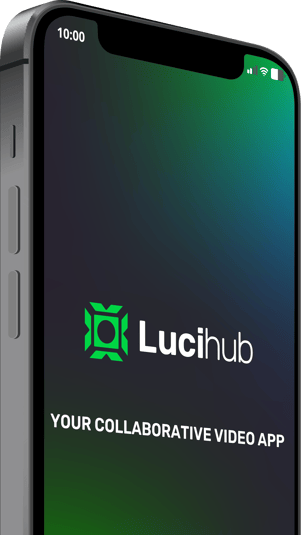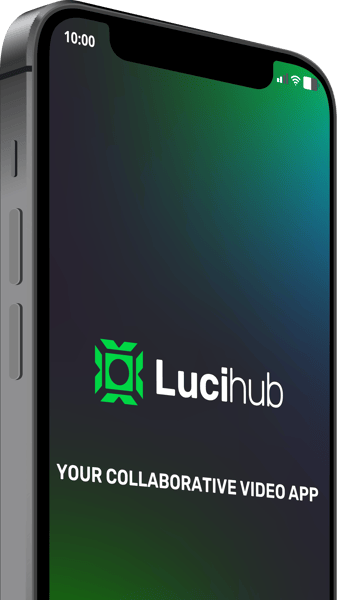In this guide, you’ll learn:
Understanding Mobile Video Orientations: 16:9 vs. 9:16
Choosing the Right Filming Orientation for Your Project
Best Mobile Phone Camera Settings for Filming Video
Understanding Mobile Video Orientations 16:9 vs. 9:16
You've got your smartphone in hand, ready to capture a moment or share a message. But before you hit that record button, there's a crucial decision to make: landscape or portrait? The orientation you choose can significantly influence how your audience perceives and engages with your content. Let's demystify the differences between 16:9 and 9:16 orientations and help you make an informed choice.
A 16:9 orientation in mobile video refers to a widescreen or landscape format where the width is almost twice the height.
A 9:16 orientation in mobile video is a portrait format where the height is almost twice the width.
Choosing the Right Filming Orientation for Your Project
Best Use Cases for 16:9 Filming
First, let's talk about the classic 16:9 landscape orientation. Picture this: You are standing atop a mountain, gazing at the vast expanse before you. The sun is setting, casting a golden hue over everything. Now, imagine capturing this scene in portrait mode. Doesn't do it justice, right? That's where 16:9 comes into play.
Showcasing Landscapes and Scenic Views:
The 16x9 landscape orientation is ideal for showcasing landscapes and scenic views, capturing everything from sunsets to bustling cityscapes in their full splendor. It not only evokes strong emotions in viewers, allowing them to envision themselves in these beautiful settings, but also enhances a brand's premium image. This format is especially beneficial for businesses in the following industries: Travel, Real Estate, and Hospitality
Wide Group Shots:
Have a big group of friends or a large event? 16:9 ensures everyone fits into the frame. For businesses that host events, workshops, or community gatherings, capturing wide group shots can be a testament to the brand's community engagement and popularity.
Community Building
Showcasing large gatherings or events can emphasize a brand's commitment to community building. Potential customers viewing these shots can feel the inclusivity and warmth of the brand community.
Event Promotion
For brands that regularly host events, wide group shots can serve as promotional material for future events. When potential attendees see the scale and enthusiasm of past events, they're more likely to participate in upcoming ones.
Dynamic Action Scenes:
Brands and organizations in the entertainment, sports, or adventure sectors can significantly benefit from dynamic action scenes captured in 16:9 orientation. The 16:9 landscape orientation, with its wide frame, offers brands a unique opportunity to showcase their offerings in a visually rich and engaging manner, driving interest and conversions from customers and potential customers alike.
The primary benefit of filming video in 16:9 is its ability to capture the entire scope of the moment, giving viewers a cinematic experience.
Full Experience
Whether it's a high-speed international auto race in Las Vegas or a high-energy regional dance competition in Omaha, the wide frame captures all the action, making it more immersive.
Highlighting USPs
For businesses like adventure sports operators or fitness trainers, dynamic action scenes can highlight unique selling points. For instance, showcasing a new rafting route or a unique workout routine can attract potential customers looking for novel experiences.
Best Use Cases for 9:16 Filming
Now, let's switch gears and talk about the 9:16 portrait orientation. If you're looking to engage your audience on social media, this is your go-to orientation. Why? Because platforms like Instagram Stories, TikTok, and Snapchat are designed for this vertical format making it a favorite among communication professionals.
Optimized for Social Media
With users primarily accessing these platforms on mobile devices, portrait videos take up more screen space, ensuring your content gets the attention it deserves.
Fosters a Stronger Connection
The intimate frame of 9:16 focuses attention on the subject, be it a person or a product, creating a more personal connection with the viewer.
When should you opt for 9:16? Here are some best practices:
Tutorials and How-To Videos:
The vertical frame is perfect for close-ups, making it ideal for step-by-step guides. In the realm of customer communication, tutorials and how-to videos play a pivotal role. They not only educate but also empower your customers to make the most of your product or service. The vertical 9:16 frame, with its close-up capabilities, is tailor-made for such content.
Detail Oriented
The vertical frame allows brands to zoom in on specific features or steps, ensuring that viewers grasp every detail. This is especially beneficial for products that require intricate demonstrations, such as tech gadgets, makeup tutorials, or DIY craft kits.
Mobile Friendly
Considering that a significant portion of potential customers access content via mobile devices, vertical videos offer a full-screen viewing experience without the need for users to rotate their phones. This seamless experience can increase engagement and retention rates.
Interactive Elements
Platforms like Instagram and TikTok allow interactive elements in vertical videos, such as clickable links or swipe-up features. Brands can leverage these to direct viewers to product pages, sign-up forms, or other relevant resources.
Testimonials and Personal Stories:
Testimonials and personal stories are the heartbeats of authentic brand communication. They provide real-world validation of your product or service and can significantly influence potential customers' purchasing decisions.
Authenticity
The vertical 9:16 frame offers a more personal and intimate view, making testimonials feel genuine and relatable. When potential customers see real people sharing their positive experiences, it builds trust and credibility for your brand.
Emotion-Driven
The close-up nature of the vertical frame captures emotions vividly. Whether it's the joy of a customer who's found the perfect solution or the relief of someone who's overcome a challenge with your product, these emotions can resonate deeply with viewers and drive them to action.
Call to Action
After sharing a compelling testimonial, brands can use the vertical video format to include a clear call to action, guiding viewers on the next steps, whether it's making a purchase, signing up for a newsletter, or visiting a website.
Best Mobile Phone Camera Settings for Filming Videos
Capturing videos on your mobile phone requires a basic understanding of camera settings, but to film like a pro, it's crucial to delve deeper. Here's a breakdown of the optimal settings for both landscape and portrait filming:
Mobile Camera Settings for Landscape Videos (16:9 Orientation)
Landscape videos, with their wider frame, are perfect for capturing scenic views, group shots, and dynamic action.
Resolution: Opt for the highest available resolution, preferably 4K. This ensures clarity, detail, and flexibility in post-production.
Frame Rate: 24fps (frames per second) offers a cinematic look, while 30fps is standard for most videos. For slow-motion, consider 60fps or higher.
Stabilization: Ensure Optical Image Stabilization (OIS) or Electronic Image Stabilization (EIS) is activated to minimize shakes, especially if you're moving.
Focus: Use auto-focus for general shots. For specific subjects, tap on the screen to focus, ensuring clarity.
White Balance: Set to 'Auto' for most outdoor scenarios. For sunsets or twilight hours, consider the 'Cloudy' or 'Shade' settings.
ISO: (Sensitivity to light) Keep it low (100-200) in bright conditions to avoid graininess. Increase only if the scene is too dark.
Exposure: Adjust manually if the video appears too bright or dark. Remember, it's better to slightly underexpose than overexpose, as you can brighten the video in post-production.
Grid Lines: Activate them to ensure a straight horizon and to apply the rule of thirds for composition.
Mobile Camera Settings for Portrait Videos (9:16 Orientation)
Portrait videos are tailored for social media stories and platforms like TikTok and Instagram Reels. Here's how to optimize your settings:
Resolution: 1080p is generally sufficient for social media. However, if storage isn't an issue, 4K offers better quality.
Frame Rate: 30fps is standard. For dynamic content or dance videos, consider 60fps for smoother motion.
Stabilization: Especially important if you're holding the phone by hand. Activate OIS or EIS to reduce shakiness.
Focus: Auto-focus works well. If you're showcasing a product or specific subject, tap to focus on it.
White Balance: 'Auto' is suitable for most indoor and outdoor scenarios. Adjust based on lighting conditions if colors appear off.
ISO: (Sensitivity to light) Keep it low to medium. Since portrait videos are often close-ups, you want to avoid noise or grain in your footage.
Exposure: Adjust based on your subject. If you're filming a person, ensure their face is well-lit and clear.
Grid Lines: Use them to center your subject or to apply the rule of thirds vertically.
Final Thoughts
While the default settings on most smartphones are decent, fine-tuning them based on your video's orientation can make a world of difference. Whether you're capturing the vast expanse of a landscape or the intimate setting of a portrait video, the right settings are key to producing high-quality content.
However, the power of smartphone filming goes beyond its technical capabilities. Your goal is to create content that connects with your audience on an emotional level, and that starts with a clear and compelling idea.
Need help with that? Read our guide to The Power of Ideas in Content Creation.
If you’re in the world of corporate communications, you might want to check out our blog on Using Video for Effective Employee Onboarding.
So, what are you waiting for? Grab your smartphone, and let your creative vision guide you. Happy filming!
Elevate Your Video Production with Lucihub
At Lucihub, we're passionate about empowering professionals with the knowledge and tools needed to produce outstanding video content.
Ready to see the difference Lucihub can make?
Request a demo today and take your video production to the next level.


